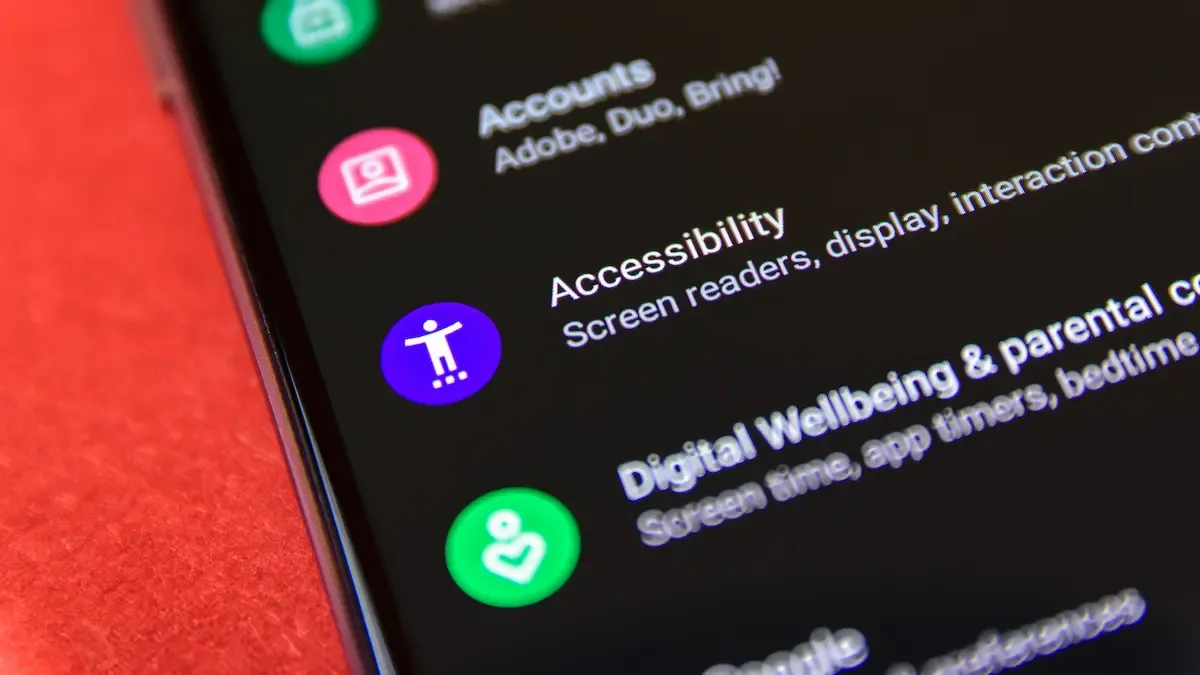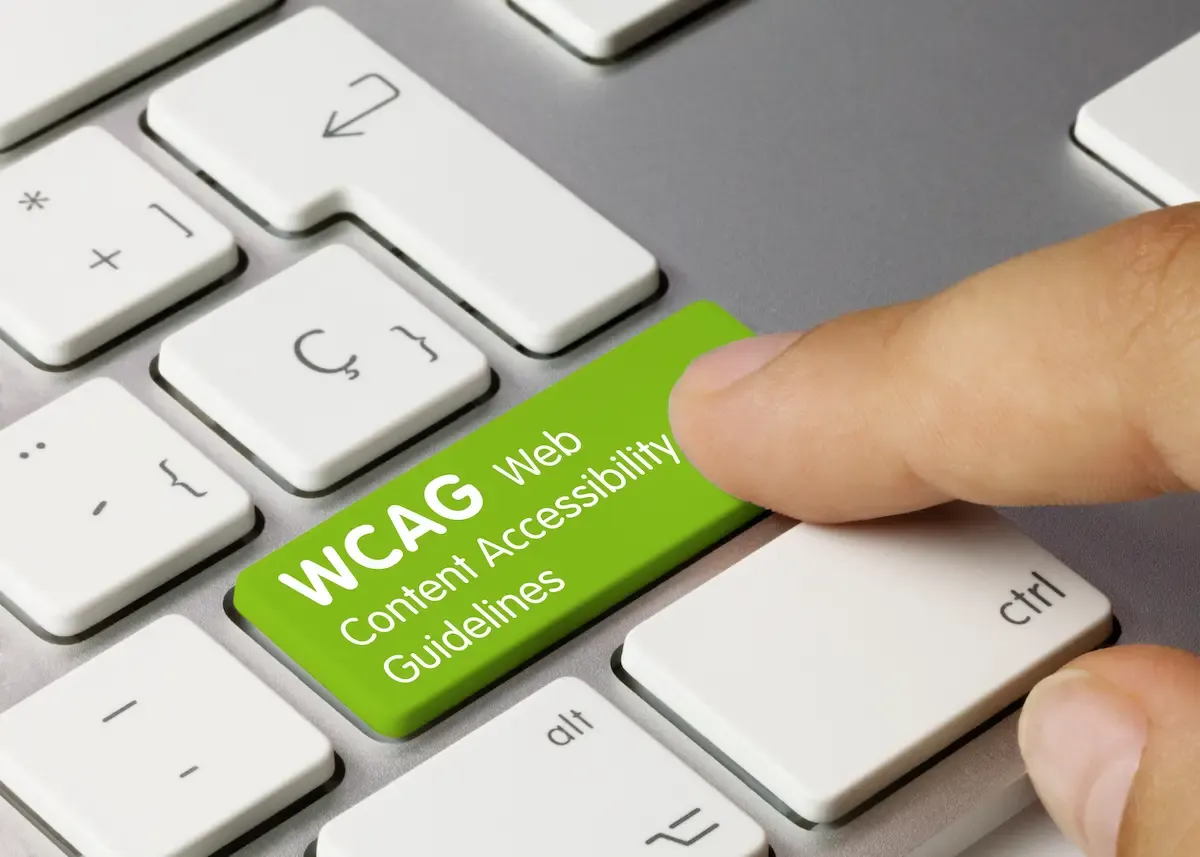In the fast-paced world of healthcare marketing, many pharma brands get caught up in the need for informative, engaging content that resonates with a target audience.
While this is obviously incredibly important, when pursuing innovation and captivating design in your digital marketing strategy, it can be easy to overlook one crucial aspect: accessibility.
Everyone has a right to access the information and services they need, regardless of their abilities or disabilities. And that’s why digital accessibility is such an important element for healthcare websites to consider.
Digital accessibility allows brands to tackle current inequalities within health, providing everyone with access to the health information they need to stay healthy and educated.
Regardless of whether someone has a sight issue, mobility problem or any other disability, by prioritising accessibility in your healthcare marketing campaigns, you can lead from the front and set an example for others to follow.
In this article, we will take you through some of the most effective ways to do exactly that. Join us as we highlight not only why digital accessibility is important but also how you can take actionable steps to make your content more accessible.
What is digital accessibility?
Within the UK, one in five people has some form of disability. Therefore, marketing with digital accessibility in mind ensures that nobody is excluded from healthcare education and campaigns.
Regardless of whether someone has a visual, hearing, mobility or cognitive impairment, digital accessibility is the practice of creating websites and content in such a way that everyone can understand and interact with it without any hindrance or issues.
However, making your digital content accessible doesn’t only refer to people with disabilities.
As per the NHS Digital’s ‘Designing for inclusion’ guidelines, digital accessibility also needs to consider factors like location, health and equipment – in essence, anything that could impact someone’s ability to easily use or access your content or services.

Why is digital accessibility important in healthcare?
Digital accessibility is important because it helps create a smooth, streamlined and stress-free journey for all of your website visitors.
In doing so, this not only ensures a fantastic user experience but also maximises your reach to as large a target audience as possible.
By ensuring that all patients, regardless of their abilities, can access vital healthcare information and services online, you can easily demonstrate your commitment to delivering patient-centric care, helping foster trust and strengthening patient-provider relationships.
Is digital accessibility a legal requirement?
In a word, yes. Making your digital content accessible isn’t simply an option healthcare brands need to consider. It’s a legal requirement.
Here at Medico Digital, for example, we abide by the Web Accessibility Initiative (WAI) guidelines set by the World Wide Web Consortium (W3C) – the main international standards organisation for the World Wide Web.
This means that each piece of web content we design for desktops, laptops, tablets or mobile devices must meet the four principles that the W3C’s Web Content Accessibility Guidelines (WCAG) are based on:
-
Perceivable – content and user interface elements should be easy for users to understand.
-
Operable – user interface elements and the overall website navigation should be functional and easy to operate.
-
Understandable – both the user interface functionality and the information available on the website should be clear.
-
Robust – the web content must be reliably interpreted by a variety of users, including technologies like artificial intelligence and other forms of assistive technologies.
With these guidelines being updated on a regular basis, it’s crucial to stay up-to-date on the latest advice.
The most recent version – WCAG 2.2 – were released earlier this month as an extension of WCAG 2.1 guidelines, for instance, and highlighted nine new success criteria for designers to follow.

Designing for digital accessibility: key aspects to consider
While the main purpose of digital accessibility is to ensure everyone has equal access, there are certain design aspects to keep in mind when creating specific pieces of web content for different users. These include:
-
Blindness – with approximately 360,000 people in the UK having blindness or partial sight, it’s important to make your web content accessible by ensuring compatibility with screen readers and properly labelling images, links and call-to-action buttons.
-
Colour blindness – many web users with visual impairment issues like colour blindness will often rely on having customisable text size and colour schemes available. Therefore, your website should make these features clear and noticeable.
-
Mobility issues – it’s important to accommodate users with mobility issues by using large and bold clickable link areas, making the keyboard navigation easy to use and ensuring your digital content is compatible with assistive technology, such as switches and eye gaze devices.
-
Deafness – adding captions to videos can help assist hard-of-hearing or dyslexic users while enhancing the overall user experience.
-
Dyslexia – certain fonts are available to help reduce reading errors for dyslexic users and potentially improve the user experience for others.
-
Cognitive disabilities – help simplify the online experience for the 1.5 million people in the UK with learning disabilities by using short, easy-to-understand menus, limiting the number of options available and maintaining standardised controls. Also, consider creating ‘Easy Read’ content that combines short sentences with clear explainer images.
Further information on specific conditions and how to support them through accessible design can be found here.
Designing for digital accessibility: useful resources
Prioritising digital accessibility in healthcare marketing isn’t exactly a recent thing.
Back in 2015, the University of Cambridge published research that highlighted the need to improve communication channels between clients and graphic designers, in order to prioritise visual accessibility.
This stated: “We need to reconcile, not the perception of the importance of visual accessibility, but the communication of the need for it, between graphic designers and clients. Acknowledging these issues, and taking steps to improve the situation will help improve the visual accessibility of graphic design for everyone”.
While the same message remains true today, a lot of progress has been made since that study was released – especially in light of the regular updates made to the WAI’s WCAG guidelines.
For example, there are now several fantastic resources available for designers and agencies to use when developing web-based content. These include:
- Home Office Digital: ‘Dos & don’ts on designing for accessibility’
Back in 2016, the accessibility team in Home Office Digital shared various posters across the government showing the dos and don’ts of designing for users with accessibility needs like autism, blindness, low vision, deafness or dyslexia.
- W3C’s WAI: ‘Introduction to Understanding WCAG’
Digital accessibility is all about transparency and the W3C have several resources available to help brands understand their guidelines. This document is especially useful for breaking down the current WCAG 2.2 guidelines and providing detailed descriptions of each success criterion.
- NHS Digital: ‘Designing for inclusion’
As mentioned earlier in this article, NHS Digital’s ‘Designing for inclusion’ outlines various guidance and advice on how to ensure web content meets the standards required.
The NHS also offer a service manual to help healthcare brands, medical professionals and agencies build consistent, usable digital content specifically for the NHS.
WAVE® offers a suite of evaluation tools to help healthcare brands ensure their web content is accessible to patients with disabilities, by identifying various WCAG errors.
The UK Government have various resources available to help brands ensure their web content meets the legal requirements, including their own accessibility strategy. However, this website provides guidance on how healthcare brands can meet government accessibility requirements.
- Patient Information Forum: ‘Web accessibility – a quick guide’
This guide offers guidance based on guidelines set by the World Accessibility Initiative (WAI) and provides practical support to ensure health information websites remain accessible to all.
- Patient Information Forum: ‘Co-production: involving users in developing health information’
This guide was published in 2021 to provide practical support to healthcare brands when involving users in the co-production and sharing of health information.

Digital accessibility: a win-win for everyone
Designing digital content that meets the needs of diverse audiences, including those with disabilities, should be a priority within any healthcare brand’s marketing strategy.
Adopting this approach will not only save you time over the long run, but it will also help ensure you align with accessibility standards and guidelines.
Here at Medico Digital, we have first-hand experience in creating digital content with accessibility in mind.
Our very own website, for example, is specifically designed to meet all the requirements of the Equality Act 2010 and the W3C’s WAI. By incorporating various text and design functions, we help ensure our web content remains accessible to everyone, everywhere.
For further information on developing content with digital accessibility in mind, our team are only ever a phone call away. Simply get in touch with us to get started.
